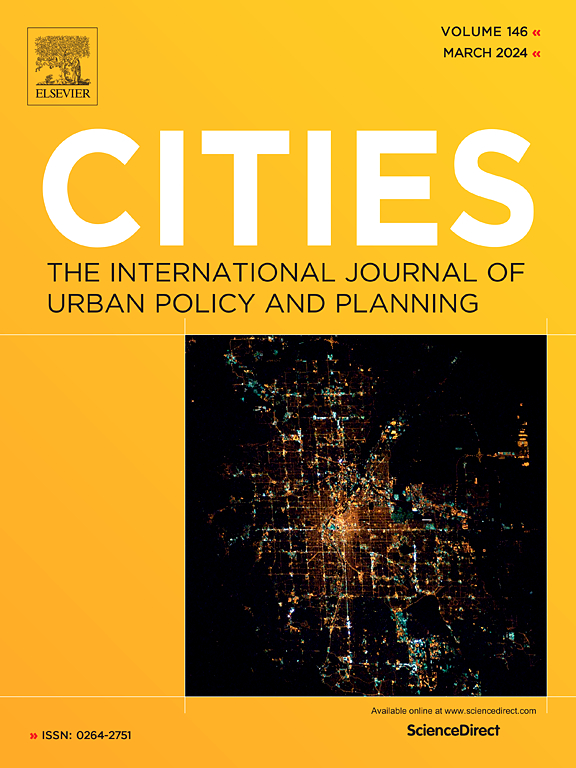量化能源消耗与人口之间的时空错配:中国广州和深圳的比较研究
IF 6
1区 经济学
Q1 URBAN STUDIES
引用次数: 0
摘要
能源消耗与人口之间的不匹配被认为是造成能源短缺的关键因素。由于缺乏足够时空分辨率的数据,以往的研究侧重于评估全球范围内能源消耗与人口之间的不匹配。在本研究中,我们提出了一种方法,利用移动电话信令数据和遥感夜间光线数据,在全球和区域范围内对两个城市的能源消耗和人口之间的不匹配进行量化。手机信号数据有助于评估全球和区域能源消耗与人口之间的不匹配。能源分配不足的情况主要出现在研究区域的中心城区。能源分配不足在工作日更为明显。研究地区发现了三种错配形式:U型、倒 U 型和近线型。随着时间的推移,职住平衡与地区人口和能源消耗之间的不匹配呈负相关。就业-住房平衡与能源错配呈负相关。这项研究在多个空间尺度上测量了能源与人口之间的不匹配,为地方能源分配提供了科学支持。本文章由计算机程序翻译,如有差异,请以英文原文为准。
Quantifying the spatiotemporal mismatches between energy consumption and population: A comparative study in Guangzhou and Shenzhen, China
Mismatches between energy consumption and population have been identified as key factors in generating energy deficiency. Previous studies have focused on assessing mismatches between energy consumption and population on a global scale owing to insufficient data of sufficient spatiotemporal resolution. In this study, we propose a methodology for quantifying such mismatches using mobile phone signaling data and remote sensing nighttime light data at the global and regional scales in two cities. The mobile phone signaling data were useful for assessing global and regional mismatches between energy consumption and population. The underallocation of energy dominated the central urban areas of the study area. The underallocation of energy was more marked on weekdays. Three forms of mismatch were found in the study areas: U, inverted U, and near-linear-shaped. The job–house balance was negatively associated with regional mismatches between population and energy consumption over time. The job-house balance is negative with energy mismatches. This study measured the mismatch between energy and population at multiple spatial scales and provides scientific support for local energy allocation.
求助全文
通过发布文献求助,成功后即可免费获取论文全文。
去求助
来源期刊

Cities
URBAN STUDIES-
CiteScore
11.20
自引率
9.00%
发文量
517
期刊介绍:
Cities offers a comprehensive range of articles on all aspects of urban policy. It provides an international and interdisciplinary platform for the exchange of ideas and information between urban planners and policy makers from national and local government, non-government organizations, academia and consultancy. The primary aims of the journal are to analyse and assess past and present urban development and management as a reflection of effective, ineffective and non-existent planning policies; and the promotion of the implementation of appropriate urban policies in both the developed and the developing world.
 求助内容:
求助内容: 应助结果提醒方式:
应助结果提醒方式:


